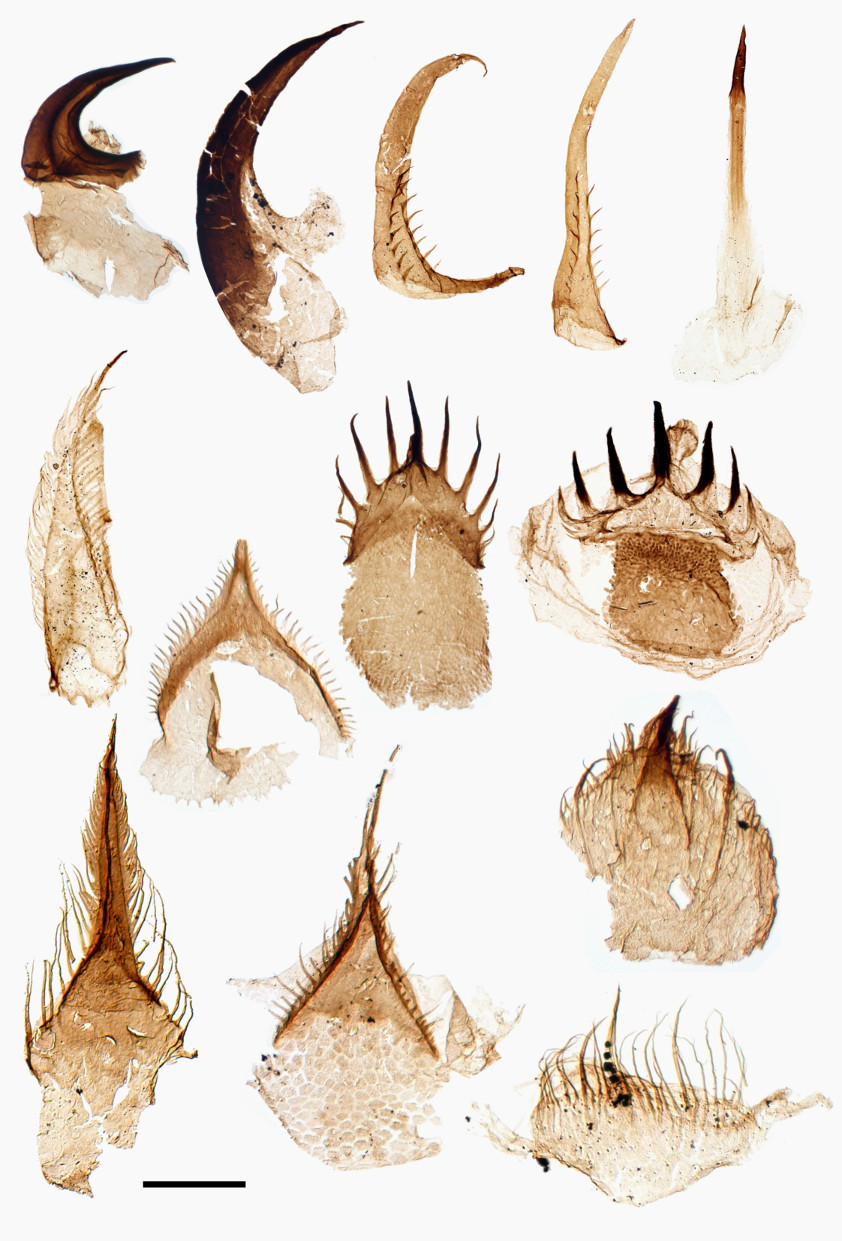Are you ready? OK!
With help from electron microscopy, researchers from the University of Cambridge have successfully characterized the internal structure of teeth belonging to a horrible, horrible phylum of marine worms known as priapulida, or penis worms.
This feat has allowed for the creation of what the paleontologists are calling a penis worm “dentist’s handbook,” which will allow for future identification of previously unknown penis worm species using fossil records dating to the Cambrian explosion, a period of rapid evolutionary development that occurred about a half-billion years ago, with one product being penis worms. Lots of penis worms.

Image: Smokeybjb/Martin
Penis worms are penis worms because they look an awful lot like waterlogged dicks, and, what’s more, these waterlogged dicks have waterlogged dicks of their own in the form of a spiny proboscis, which is actually the penis worm’s throat, which is capable of turning itself inside out and emerging from the worm’s mouth, or whatever passes for a penis worm mouth. Mostly, penis worms hang out in underwater mud, occasionally feasting on slow-moving invertebrates and the mud itself. During the Cambrian, however, penis worms were a considerable predator.
The penis worms’ teeth are actually located around their throat/proboscis thing and this is part of how they get around—a penis worm will essentially turn its mouth inside out and then drag itself around using the sharp teeth ringing its pharynx (which is also where the worm’s nervous system is located). Imagine having teeth that double as legs and a throat that doubles as a face and a brain that doubles as a throat. Where Darwin meets H R Giger, in other words.

Image: Martin et al/Tom Harvey
The nice thing about penis worms, for paleontologists, is that teeth leave a detailed fossil record. And penis worms through history have had many sorts of teeth, examples of which are above: bear claws, grappling hooks, combs, yucca trees (?). The teeth the Cambridge researchers were especially interested in belong to a species known as ottoia, which lived during the Cambrian era and whose fossils can now be found within the Burgess Shale formation in western Canada. By describing in fine detail the teeth of this one ancient species, the group was able to categorize the fossilized teeth of many previously unidentified penis worm species around the world.
“Modern penis worms have been pushed to the margins of life, generally living in extreme underwater environments,” offers Martin Smith, lead author of a new paper describing the new work, in a statement. “But during the Cambrian, they were fearsome beasts, and extremely successful ones at that.” Ancient penis worms had a diet much more expansive than the mud smorgasboard contemporary penis worms are relegated to, up to and including proper sea life like shrimp and, “a wide range of small invertebrates that lived at or near the water sediment interface such as hyolithids, brachiopods, different types of arthropods, polychaetes and wiwaxiids,” according to a 2012 study examining the gut contents of fossilized Ottoia.
Smith and co. are pretty excited about their new findings and, indeed, it seems like a new dawn for penis worm research. “Teeth hold all sorts of clues, both in modern animals and in fossils,” he says. “It’s entirely possible that unrecognised species await discovery in existing fossil collections, just because we haven’t been looking closely enough at their teeth, or in the right way.”
That wasn’t so bad, really.